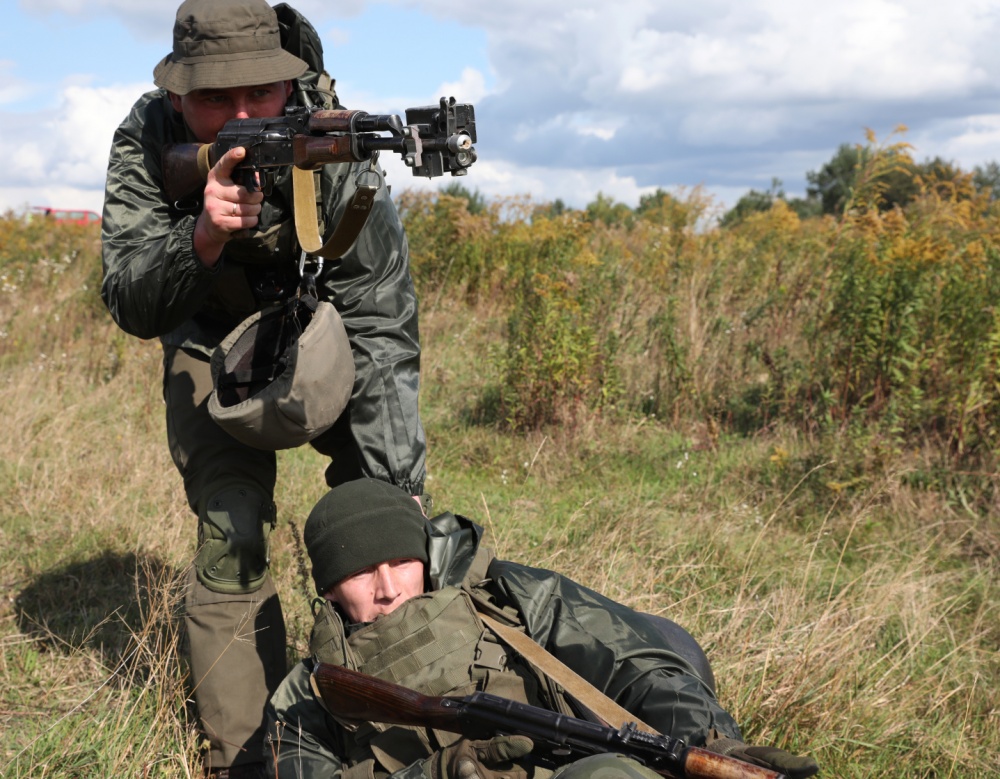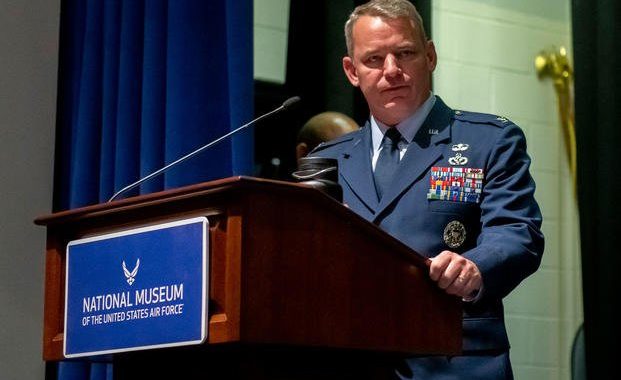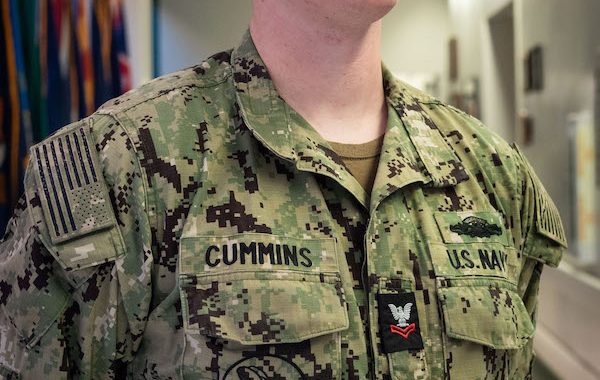Ukraine Improves Military Readiness During RT19
3 min read
YAVORIV, UKRAINE
Story by Sgt. Kyle Larsen
5th Mobile Public Affairs Detachment
Ukraine improves military readiness during RT19
5th Mobile Public Affairs Detachment
Story by Sgt. Kyle Larsen
YAVORIV, Ukraine – With gunfire echoing through the woods, squads of U.S. and Ukraine troops swiftly advanced bounding from tree to tree. Communicating effectively through tactical signals, the Soldiers surrounded the training area, cordoning it off from the simulated enemy forces.
U.S. civil affairs Soldiers from the Civil Military Cooperation (CIMIC), which provide civil military operations expertise in Ukraine, trained, evaluated and demonstrated casualty care under fire as they develop the defense capabilities of the Armed Forces of Ukraine.
“Tactical field care isn’t just something specific to the U.S.,” said Staff Sgt. Nate Mitcavish, a civil affairs noncommissioned officer with CIMIC team one. “It applies to all military field environments, as an individual may come across a traumatic injury and this training prepares them for that, as well as for the ongoing war in Eastern Ukraine.”
The multinational response team put on a show, as they demonstrated their capabilities for members of the media and North Atlantic Treaty Organization partner and allied nation’s leadership stationed throughout the European Theater, to include the U.S.
The NATO operational capabilities concept evaluators (OCCE) and CIMIC teams advised and assisted the Ukraine soldiers in the execution of the medical training they received earlier in the day from civil affairs and Red Cross representatives.
“The Ukrainian response time was impressive,” said Mitcavish. “When the simulation started and the injured personnel were identified, the Ukrainian soldiers ran to their aid and quickly applied the tourniquet and chest seal, addressing that massive hemorrhaging. The process that they went through was timely and impressive.
“Whenever you conduct multinational training there is going to be an obvious language barrier, but through training and practicing the drills, everyone knew their role and how to treat the casualty and move off the [location].”
Bounding through the woods, the teams engaged targets in the direction of enemy fire suppressing the threat, as the medical response personnel transitioned to the wounded civilian. The teams transported the injured across the road to strategically positioned ambulances for evacuation from danger.
While their counterparts were patching wounds and engaging enemy targets, the Armed Forces of Ukraine’s Civil Defense Battalion was busy training on another STX lane. The unit improved their knowledge on decontamination of military assets following a chemical, biological, radiological and nuclear attack, with advanced decontamination equipment provided by U.S. and NATO forces.
“This year the U.S. introduced us to the decontamination machine which has been adapted for Ukrainian vehicles and can detect five different chemicals in the air at one time,” said Armed Forces of Ukraine Maj. Artem Karpus, the deputy commander of the Civilian Defense Battalion. “It is important for us to use NATO standards and during this training we used the new devices provided for chemical and radiological detection.”
The road was lined with Ukrainian soldiers in mission oriented protective posture (MOPP) gear and holding a red and white flag, as they raised the red flag to signal the military vehicles to begin slowly creeping through the gauntlet of power washers and scrub brushes.
“It is important to pay attention to weather conditions,” said Karpus, the deputy commander of the Civilian Defense Battalion. “You must clean each vehicle in accordance with the different weather conditions. For example, when you decontaminate more than a few pieces equipment per hour [when it is warm], you must give your [soldiers] more time to rest and provide them with adequate water so that they continue to work quickly and professionally.”
The training was a primary learning objective for Ukraine’s development of their continued strengthening of their defenses along the border and build a stronger, more unified Europe to defend against attacks from all potential adversaries.





